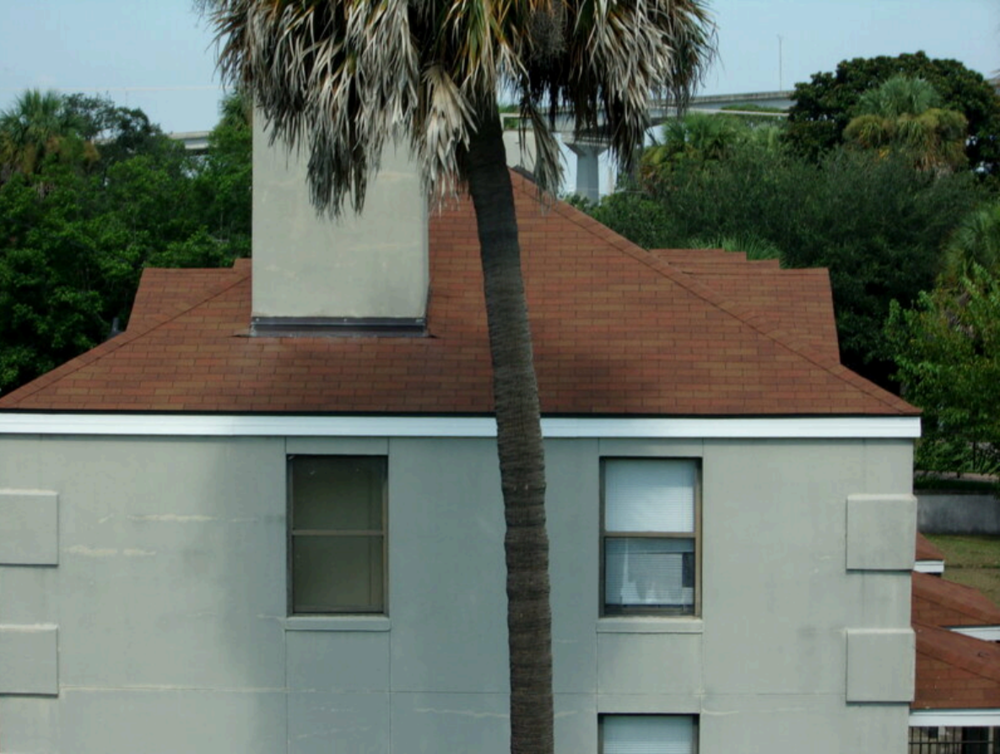
Caption
An apartment building at Yamacraw Village in Savannah is seen with asphalt shingle roofing, which was installed in 2019 and noted by AEI Consultants as the only significant capital expenditure undertaken at the public housing complex in the past five years.
Credit: AEI Consultants

